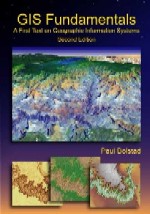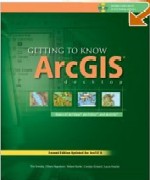 INTRODUCTION
INTRODUCTION When using a GIS, we work with abstractions of reality. The spatial data models are simplified representations of the world that suppport map display, querying, editing and analysis in a GIS. Data models are at the foundation of everything with do with a GIS.
LEARNING OBJECTIVES
- Describe how GIS represent the reality.
- Explain why coordinates are important in data models.
- Describe the two distinct types of data used to define cartographic objects.
- List several examples of things that could be represented in thematic layers.
- Describe the difference between cartesian coordinate systems and sperical coordinate systems.
- Describe the different attribute categories
- Describe the vector data model
- Describe the raster data model
- Describe the spaghetti data model
- Describe the advantages of using a topological data model
- Describe the relationship between vector features and attributes
- List some advantages and disadvantages of the vector and raster data models
- Describe Triangulated Irregular Networks
- Define object data model
- List common formats for spatial data
- Describe what ArcCatalog is used for
- Utilize ArcCatalog of managing spatial data
Lecture - GIS Fundamentals
- entities or phenomena
- spatial feature
- cartographic object
- data model
- coordinates
- thematic layers
- cartesian coordinate system
- orthogonal
- spherical coordinate system
- attributes
- nominal
- ordinal
- interval / ratio
- vector
- spaghetti data model
- topological data model
- topology
- planar topology
- raster
- cells
- cell dimension
- continuous
- discrete
- triangulated irregular network (TIN)
- digital elevation model (DEM)
- object data model
- data format
Lab - Getting to Know ArcGIS
- ArcCatalog
- catalog tree
- connect to folder
- file extension
- geodatabase
- feature class
- layer file
- shapefile
Lab: Getting to Know ArcGIS
- Chapter 4 - Exploring ArcCatalog
- Chapter 14 - Building Geodatabases
For next week lecture and class - GIS Fundamentals - Chapter 3 - Geodesy, Projections, and Coordinate Systems
HOMEWORK
Not
STUDY QUESTIONS
GIS Fundamentals, pp. 64-65 (do not do the coordinate conversion table)
GIS Fundamentals, pp. 64-65 (do not do the coordinate conversion table)



No comments:
Post a Comment